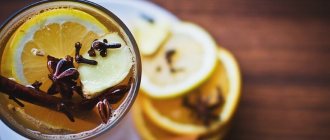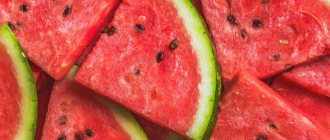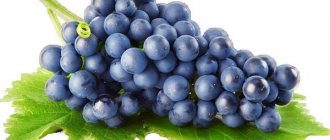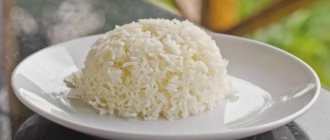General nutritional rules for kidney patients
Compliance with these rules is mandatory in the diet for kidney stones. If symptoms appear, it is recommended:
- Reduce or eliminate table salt consumption to 7–8 grams per day, and in case of high blood pressure to 5 grams.
- Limit protein (meat, fish, eggs, legumes, cottage cheese) to 80 grams, and in case of renal failure or exacerbation of pyelonephritis to 20–40 grams.
- Use only vegetable broths, since meat broths contain extractive substances that damage the diseased kidney.
- Exclude hot and spicy foods, smoked meats, pickles and marinades, and alcohol.
- Divide daily food into 6 meals.
Fats and carbohydrates are allowed almost without restrictions, excluding baked goods made from yeast dough.
During urolithiasis, it may be necessary to switch to kidney table No. 7:
- table 7A - prescribed in the first week of exacerbation, salt should not be eaten at all, protein is allowed in an amount of no more than 20 grams per day, vegetable food;
- table 7B - less strict, prescribed at the beginning of recovery, salt is prohibited, you can eat up to 45–60 grams of animal protein food per day, and 125 grams of cottage cheese;
- table 7B - for nephrotic syndrome, high protein (110–120 g);
- table No. 7G - for hemodialysis, characterized by an increased proportion of proteins, the presence of 2–3 g of salt, and fluid limitation to 0.7 l/day.
A diet for urolithiasis does not meet the body’s needs, and therefore requires additional intake of multivitamins and microelements.
Oxalate nephrolithiasis. Patient Management Options
21.11.2019
34266
0
| M.Yu. Prosyannikov Candidate of Medical Sciences, Head of the Department of Urolithiasis, Research Institute of Urology and Interventional Radiology named after. ON THE. Lopatkina - branch of the National Medical Research Center of the Ministry of Health of the Russian Federation (Moscow) |
In the program “An Hour with a Leading Urologist,” the studio guest was Candidate of Medical Sciences, Head of the Department of Urolithiasis at the Research Institute of Urology and Interventional Radiology named after. ON THE. Lopatkina Mikhail Yurievich Prosyannikov. He spoke in detail about the mechanisms of calcium oxalate urolithiasis and the available methods of conservative influence on this process.
The majority of all stones observed in patients with urolithiasis (KSD) are calcium oxalate. At the same time, as Mikhail Yuryevich noted, new drugs are now appearing that can help in the treatment of just such urolithiasis, but they can only be useful with a good understanding of how stones are formed and what mechanisms need to be affected to prevent stone formation.
According to an analysis of 12,992 studies conducted by the Research Institute of Urology conducted from 1990 to 2015, oxalate urolithiasis accounts for about 64% in men and 55.1% in women in the structure of urolithiasis. World statistics show approximately the same indicators: 50–70% of the total incidence of stones [1].
Mechanism of oxalate formation
As Mikhail Yuryevich recalled, depending on the chemical structure, two forms of calcium oxalate stones are distinguished: weddellites and wewellites (calcium oxalate dihydrate and monohydrate, respectively). From a clinical point of view, this is not of great importance, since both compounds cannot be dissolved by any means today. As soon as calcium combines with oxalic acid, a precipitate occurs. When combined with, say, citric acid, no precipitate is formed. This is the basis of one of the promising methods for the prevention of calcium oxalate urolithiasis: by increasing the proportion of citrates in the urine, the likelihood of calcium oxalate stones formation decreases.
Calcium oxalates may be present in the urine as crystals in patients without stones. They are visible on sediment microscopy.
For adequate kidney function, there must be a difference in urine pH in the pelvis and in the loop of Henle by approximately 2 units. The main risk factor for oxalate nephrolithiasis is a decrease in urine pH. At a certain stage, the calcium phosphate base prolapses into the cavity of the renal pelvicalyceal system. Thus, calcium oxalate stone grows on a calcium phosphate foundation.
Fig.1. Modern ideas about the pathogenesis of stone formation in urolithiasis, the formation of Randall’s plaque [6]
Up to 57% of people who do not have urolithiasis may still have Randall's plaques, whitish spots that indicate stone formation [2]. It is important to remember that KSD is a polyetiological disease, and for the formation of a stone, a confluence of several factors is necessary. Not in every case all the necessary factors are present immediately, but still the processes of stone formation are observed in many people
It is extremely difficult to influence Randall's plaques, primarily due to the lack of effectiveness criteria. At the same time, today it is possible to influence the concentration of those elements from which stones are formed.
“Swing” pH and stone formation
Salt crystals are poorly soluble in the urine of a person with a tendency to form stones, in particular due to the effect of pH on the excretion of the main stone-forming substances. The amount of excretion of calcium, uric acid, phosphate and magnesium is maximum at pH 5.6–5.8. In a healthy body, the balance of inhibitors and promoters does not allow stones to be deposited, despite excretion, but the most effective way to prevent stone formation is by adjusting the pH level.
A shift in urine pH to the acidic side (below 5.9–6) leads to an increase in the proportion of wavellite and oxalate component in urinary stones. To the alkaline side (from 5.1–5.3 to 6.1–6.9) - to the accumulation of a share of weddellite in stones. In general, a decrease in urine pH (less than 5.4) appears to play a more significant role in enhancing oxalate lithogenesis than calcium excretion.
Factors influencing calcium oxalate urolithiasis
Employees of the Research Institute of Urology, based on a sample of 708 people, analyzed what factors influence calcium oxalate urolithiasis. It was possible to identify 6 components:
- uricuria (increased level of uric acid excretion in urine) > 4.6 mM/day;
- magnesiumuria > 5.7 mM/day;
- calciuria > 6.2 mM/day;
- phosphaturia 30.9–36.9 mM/day;
- Urine pH is around 5.5;
- BMI 24.9–27.1 kg/m2.
To prevent calcium oxalate urolithiasis, it is necessary to influence, if possible, all these factors [3].
One of the confirmations of the influence of urine pH on the formation of calcium oxalate stones is also that the pH of morning urine in patients with uric acid urolithiasis is stable and is in the range of 5.0–6.0 (in the vast majority of cases - 5.0–5.5 ) [4]. When normalizing the pH level of urine, for example, using citrate mixtures, in 89.4% of cases, the disappearance of oxalate crystalluria is observed.
Effective and ineffective methods of prevention
Mikhail Yuryevich also emphasized the ineffectiveness of the approach in which, to treat ICD, patients are advised to reduce their dietary calcium intake - in this case, calcium begins to be washed out of the bones [5]. The normal level of calcium in the blood is 2.2–2.5 mmol/l.
Regarding the metabolism of oxalic acid, according to various clinical recommendations, the daily intake for patients with urolithiasis is from 50 to 150 mg of oxalates. Most of them are excreted in feces, about 20% remains. Another small part is synthesized in the liver. As a result, about 35 mg is excreted in urine[6]
Oxalates in the body are synthesized from amino acids - in particular glycine, glucose and ascorbic acid. Hyperoxaluria is divided into primary (types 1 and 2) and secondary (absorptive). Primary can be observed in the case of a mutation in the AGXT gene, leading to systemic damage to the body by oxalates. For this reason, liver transplants with normal AGXT enzymes are already being performed.
Additionally, the AGXT enzyme is activated by vitamin B6 intake. Therefore, it can be prescribed to patients with oxalate urolithiasis to reduce the concentration of oxalate in the urine. If primary hyperoxaluria is suspected, a genetic analysis is performed: the AGXT gene mutation is determined. Polymorphism of the ORAI1 (rs7135617), CASR (rs2202127), VDR and KL genes is also determined.
The risk of secondary hyperoxaluria increases with inflammatory diseases of the gastrointestinal tract, after resection of large sections of intestine, pancreatitis, and gallstones. Microorganisms also make a significant contribution: urease-producing bacteria (Proteus, Pseudomonas and Klebsiella) and oxalate-degrading bacteria (Oxalobacter formigenes, Lactobacter). To counteract them, correction of the intestinal microflora with eradication of urease-producing bacteria is required.
Patient Nutrition Assessment
For any type of stone, you should first evaluate the patient’s diet and understand what he eats ends up in the blood. Then the moment of transition of substances from the blood into the urine is monitored and the type of stone is determined. Diet assessment is carried out using the Eating Pattern Questionnaire (EPQ). Monitoring of urine pH, biochemical analysis of blood and urine for lithogenic disorders, and determination of the chemical composition of the stone are also carried out. There is evidence that 2 consecutive 24-hour urine collections 4–7 days apart can detect metabolic disorders in 80% of cases [7].
Dietary prerequisites for calcium oxalate urolithiasis are excessive intake of calcium, oxalates, purines and uric acid, plus insufficient intake of potassium, magnesium and vitamin B6. Thus, to prevent stone formation, it is necessary to normalize calcium intake to the level of 1000–1200 mg, reduce salt intake and restore the amount of vitamin B6. To normalize the level of oxalates in the urine, you need to limit the consumption of potatoes, spinach and chocolate, and also include more polyunsaturated fatty acids (salmon, tuna, mackerel, sardines, nuts, fish oil) in your diet. Adjusting urine pH levels can be achieved by alkalizing or acidifying the diet [8].
To normalize the level of citrates in urine, it is necessary to limit the volume of artificial carbonated drinks in the diet. In addition, natural, unpackaged juices of lemon/lime, orange and melon are rich in citrates.
According to the current recommendations of the European Association of Urology, when the urine calcium level is 5–8 mmol/day, citrate mixtures of 9–12 g/day and sodium bicarbonate 1.5 g per day are prescribed. When calcium levels are above 8 mmol/day, hypothiazide 25–50 mg/day, chlorthalidone 25 mg/day, indapamide 2.5 mg/day are prescribed.
In case of primary hyperoxaluria (excretion of oxalates > 1 mmol/day), genetic testing is first necessary to accurately identify the cause. Pyroxidine may be prescribed at a dose of 5 mg/kg per day (maximum up to 20 mg/kg per day). In case of secondary, intestinal (oxalate excretion 0.5–1 mmol/day), excessive consumption of oxalates is possible or gastrointestinal diseases are present: malabsorption syndrome, colitis, conditions after intestinal anastomoses and chronic diarrhea. The use of calcium and magnesium is prescribed, and the intestinal microbiota is also normalized.
For hyperuricuria (uric acid > 4 mmol/day), citrate mixtures 9–12 g/day or sodium bicarbonate 1.5 g 3 times/day are prescribed. In addition, allopurinol can be prescribed at 100 mg, 1 tablet/day and up to 300 mg/day in case of a significant increase in uric acid levels. It is important to monitor the predominance of vegetable protein in the patient’s diet.
Drugs for the correction of oxalaturia
To correct oxalaturia, the drug Oxalite can be used. It contains extracts of Fucus vesiculosus, Phyllanthus niruri and Desmodium styraxolifolia. At the Research Institute of Urology, a study of its effectiveness was conducted over 3 months with the participation of 30 patients. The biochemistry of the blood and 24-hour urine of patients was assessed for lithogenic disorders with the connection of remote monitoring.
Patients aged 18–66 years were divided into two equal groups of 15 people. The first received only dietary recommendations. The second one, besides them, was prescribed Oxalit for a period of 3 months.
At the first appointment of patients, the biochemistry of 24-hour urine was assessed: calcium, magnesium, oxalates, citrates, diuresis. At week 4, blood biochemistry was also assessed.
There were no significant changes observed in the diet group.
In the diet group with additional intake of Oxalit, a decrease in the average level of oxalates was noted from 0.23 to 0.11, as well as an increase in the amount of magnesium from 2.21 to 4.44.
In total, 30 patients performed more than 2,400 urine tests using a remote monitoring device - the portable ETTA AMP-01 analyzer. Analyzes performed using such a “home” urine analyzer are comparable to analyzes performed on stationary equipment, since both devices operate on the same test strips [9].
The relative density of urine was slightly increased in both groups. In addition, during observation, pH decreased slightly in both groups. As an important factor, Mikhail Yuryevich noted that the administration of Oxalit statically significantly reduced the number of red blood cells in the urine of patients.
Based on the results of the study, the authors came to the conclusion that when taking Oxalit, the level of oxalates in daily urine decreases by 2.1 times (p < 0.05), renal excretion of magnesium increases by 2 times (p < 0.05), and the degree of leukocyturia decreases and the level of protein in the urine (p < 0.05), as well as the level of erythrocyturia decreases 2.9 times to subnormal values (p < 0.05).
As Mikhail Yuryevich emphasized, until now there were no means in the arsenal of urologists that could influence the factors of calcium oxalate urolithiasis with such a degree of effectiveness.
Sources:
- Yee V. Wong et al., Int J Endo, 2015
- Stoller ML et al., J Urol, 1996
- Golovanov S. A. et al., Ex and wedge Urol, 2018
- Konstantinova O. V., Yanenko E. K., Urology, 2015
- Nagaraja Rao P. et al., Ur Tract Stone Disease, 2011
- Shestaev A. Yu., Ex and wedge Urol, 2013
- Bek-Jensen H. et al., Eur Urol, 1998 8. Manissorn J. et al., Sci Rep, 2021 9. Shaderkin I. A. et al., Ex and clin urol, 2015
Material prepared by Yu.G. Boldyreva
The article was published in the journal Urology Digest No. 5-2019
Topics and tags
Urolithiasis disease
Comments
To post comments you must log in or register
Diet for urate kidney stones
These are uric acid salts that grow in a very acidic environment. To dissolve them, you need products that alkalize the urine: dairy products, vegetables (except tomatoes), berries, fruits. Mineral waters: Essentuki No. 4, 20, Luzhanskaya, Naftusya.
Everything containing purines is limited to the maximum: offal, chicken legs, veal, cheeses, coffee, tea, chocolate, sprouted grains. Meat and fish must be boiled. In this case, half of the purines go into the broth, which the patient cannot eat.
Potato and cabbage diet for oxaluria
An effective method of treating oxaluria is diet.
Doctors often prescribe a potato-cabbage diet. The main dishes of this therapeutic diet are cabbage and potatoes, from which you can prepare various dishes, such as mashed potatoes, soup, casserole, cabbage cutlets or coleslaw. Potatoes contain potassium, which helps remove salt and excess fluid from the body. The high fiber content in cabbage has a beneficial effect on the intestinal microflora, promotes the elimination of toxins and waste, and prevents the risk of developing atherosclerosis. In addition to the two main foods in the diet for the treatment of oxaluria - potatoes and cabbage, it is allowed to eat bread (wheat and rye), low-fat dairy and fermented milk products (butter, kefir, cottage cheese), cereals (buckwheat, oatmeal, millet), unsweetened fruits ( apricots, apples, pears, peaches). It is better to prepare dietary dishes by steaming, stewing, boiling, or baking. Salt and spices must be completely excluded. You can season salads with vegetable oil or lemon juice.
The potato-cabbage diet for oxaluria involves frequent meals (4-5 times a day) in small portions. It is necessary to drink at least 2 liters of liquid per day, both still water and mineral water, herbal tea, juice, jelly. Due to the deficiency of all essential vitamins, minerals and trace elements necessary for normal life, it is recommended to follow a potato-cabbage diet for oxaluria for a maximum of 5-7 days. This diet is not suitable for everyone. Contraindications include, in addition to oxaluria, gastritis and stomach ulcers.
“Space diet” by Sergei Sivokho: without denying himself anything, the comedian lost 42 kg in 3 months
Diet for oxalate kidney stones
These are salts of oxalic acid that grow in a slightly acidic environment. Urine needs to be alkalized by increasing dairy products and vegetables in the diet. Mineral waters: Essentuki No. 4, 20, Morshinskaya, Berezovskaya.
They sharply limit those foods that contain a lot of oxalic and ascorbic acids: sorrel, all berries, beans, celery, spinach, green beans, raw onions, chocolate.
In case of urolithiasis, it is important to drink enough water, up to 3 liters daily, gradually adding 200 ml every 2-3 days under the control of edema.
Grodno Regional Children's Clinical Hospital
Details Published October 28, 2020
Oxaluria
As a result of a disturbance in the metabolism of oxalic acid, the so-called oxaluria and/or calcium oxalate crystalluria develops. In foreign literature, the term “dysmetabolic nephropathy” does not exist; the pathology in question is diagnosed as oxaluria or hyperoxaluria.
In childhood, secondary hyperoxaluria is most common, which can be isolated or combined with pyelonephritis.
The composition of the diet plays an important role in the formation of this type of crystalluria. This is due to the fact that certain types of products contain a high content of vitamin C and oxalic acid, which under certain conditions contributes to the crystal formation and precipitation of calcium oxalate salts in urine. A number of foreign researchers believe that one of the main places in the development of DN (oxaluria) belongs to the pathology of the digestive tract.
The most common causes of oxaluria:
- hereditary defects of certain enzymes
- increased intake of oxalates from food
- inflammatory bowel diseases
- previous intestinal surgery
- Crohn's disease
- ulcerative colitis
- vitamin B6 deficiency
- excess intake of ascorbic acid
Children with oxaluria, as a rule, do not have specific clinical symptoms of the disease. Quite common may be complaints of abdominal pain, dysuric phenomena (pain during urination, frequent or rare urination, attacks of renal colic).
Oxaluria can be combined with allergic diseases of the skin and respiratory tract.
In the hereditary history of children suffering from oxaluria, various diseases associated with metabolic disorders (urolithiasis, cholelithiasis, diabetes mellitus, etc.) are quite common.
The main therapeutic and preventive measures for oxaluria are drinking regimen and diet!
1.
Drinking regimen: 2-3 l/day in older children, in younger children - at the rate of 30 ml/kg/day.
2.
Regular urination pattern.
3.
Diet.
Allowed: Brussels cabbage, cauliflower, white cabbage, apricots, bananas, melons, pears, pumpkin, cucumbers, peas, all types of cereals, white bread, vegetable oil. Periodically - potato and cabbage diet.
Limited to: Carrots, green beans, chicory, onions, tomatoes, strong tea, beef, chicken, aspic, liver, cod, currants, Antonov apples, radishes.
Excluded: Chocolate, beets, celery, spinach, sorrel, rhubarb, parsley, extractives (broths).
Head 5th pediatric department of the Healthcare Institution "GODKB"
Kizelevich A.I.
Diet for phosphate kidney stones
Concretions are salts of phosphoric acid, formed in an alkaline environment. Products that acidify urine are introduced into the diet: veal, fish, chicken, bran bread, sprouted cereals, sour fruit drinks. Mineral waters: Narzan, Smirnovskaya, Arzni.
Avoid foods rich in calcium: milk, potatoes, eggs, nuts, cocoa, cilantro, celery, parsley and dill.
Obesity often causes an unfavorable outcome in kidney stones, so you need to limit your intake of sugar and refined carbohydrates.
For children
Since the urinary system of children is physiologically immature, the kidneys, in some cases, are not yet able to fully maintain salts in dissolved form. First of all, a non-episodic increased content of oxalates in a child’s urine should be a serious reason for his in-depth examination and the exclusion of pathologies of the urinary system and diseases (intestinal infections, kidney diseases, endocrine diseases). However, most often, the presence of oxalates in a child’s urine is caused by an unbalanced diet with the consumption of foods rich in oxalic acid, insufficient fluid intake or intense sweating (during intense physical activity, hot weather). An acceptable norm is the occasional presence of calcium oxalate salts in the urine at the end.
The diet for oxaluria (diet for children) has some features that determine the nature of the diet and drinking regime. Despite the general approaches to permitted and prohibited foods, the hypooxalate diet should not simply copy the diet of adults, but take into account that the growing body of a child needs a sufficient supply of proteins, fats, carbohydrates, minerals and vitamins . Therefore, only products containing oxalic acid more than 50 mg/100 g should be excluded from the diet and products containing oxalic acid should be limited to 5 to 50 mg/100 g.
It is also unacceptable to deprive a child of dairy products - at this age the skeleton is actively developing and insufficient calcium in the diet can lead to negative consequences. It is important to monitor the amount of daily intake of vitamins , both with products - black currants, rose hips, Antonovka, radishes and others, and with medications, since the formation of oxalic acid in the body increases with its consumption of more than 150-200 m3 / day.
The child's drinking regime requires special attention. It is recommended to increase the daily volume by 50% of the required age volume. At the same time, it is especially important not to limit fluid intake before bedtime, but on the contrary, in the evening the amount of fluid you drink should be increased. It is recommended to drink slightly alkaline mineral waters, lingonberry or cranberry fruit drinks, cherry and pear leaf tea, and flax seed decoction before meals.
Authorized Products
Following an oxalate diet ensures an alkaline reaction in urine and accelerates the elimination of oxalic acid derivatives from the body.
The following products are considered useful:
- cereals: oatmeal, buckwheat, millet, pearl barley, as well as soups made from them;
- vegetables: cauliflower and white cabbage, pumpkin, cucumbers, turnips, carrots, potatoes;
- fruits: pears, grapes, sweet apples, peaches, bananas, melons;
- berries: lingonberries, strawberries, cherries, watermelon;
- greens: cilantro.
A diet with oxalates in the urine allows you to eat no more than two dessert spoons of sugar per day, taking into account its content in the foods you eat. If there is no allergy, instead add 1 tablespoon of honey or steamed and chopped dried fruits to the finished dish.
Vegetable soups are considered healthy food, especially those made from fresh cabbage without spices. Among meat products with a high content of oxalates in the urine, the diet recommends boiled or baked beef, chicken, turkey, and lean minced meat. You can eat low-fat sea fish 200 g three times a week or 100 g daily.
According to the diet, permitted foods also include:
- wholemeal bread, bran;
- pasta in soup;
- dairy products: kefir, sour cream, yogurt, fermented baked milk, cottage cheese;
- vegetable and butter - 50-70 g per day, it is better to add to ready-made dishes;
- 1 egg per day;
- pine nuts and walnuts, as an addition to vegetable and fruit salads;
- weak black or green tea, coffee with milk, mineral waters recommended by a nutritionist;
- juices: cucumber, pumpkin, carrot, apple, birch;
- compotes and jelly from pears, apples and dried fruits - prunes, dried apricots.











